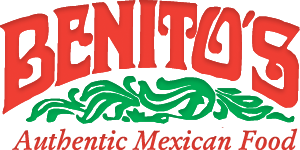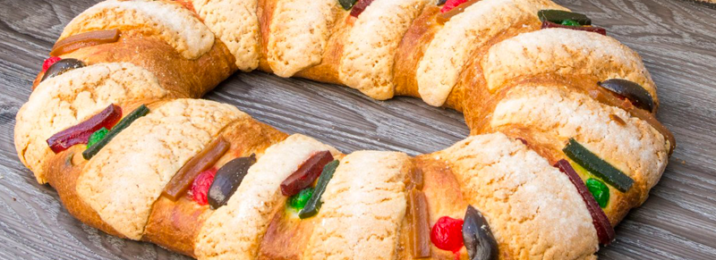Mexican Bread: What Are Their Uses in Mexican Cuisine?
Mexican Bread: What Are Their Uses?
Both Mexican bread and Mexican history are closely interlinked, transcending the culinary circle and becoming a part of the culture. Though wheat and European baking traditions were introduced during the Spanish Conquest, Mexican bread comes from centuries of ancient experimentation and cross-cultural histories.
Interestingly, Mexican bread derives most of its similarities and influences from French baking. For example, the bolillo evolved from the French baguette into the concha. Similarly, a “baño maría,” which is a water bath for a custardy kind of bread pudding, stems from the French word “bain marie.” Masa harina/corn flour is still the most popular staple for baking, and wheat comes in second place as another important staple in Mexican bread making.
It’s true that Mexico adopted various bread styles from the United States and Europe, but the traditions around the bread themselves were born and baked right in Mexico. You may find it interesting that Mexicans haven’t traditionally baked bread at home. Instead, Mexicans have often purchased baked goods from street vendors and bakeries since colonial times. Baking in Mexico is still very much centered around the hearth though as many hands are needed for big baking jobs. We’ll delve into the most popular Mexican bread and its uses in Mexican cuisine.
Mexican Bread:
Tortillas
Tortillas are probably the most well-known Mexican bread, a foldable flatbread that only uses three ingredients: masa harina, hot water, and salt.
Legend says that the first tortilla was supposed to be a gift, and oral history says that the tortilla was originally invented by a Mayan peasant to satiate his hungry king. The recorded use of corn tortillas dates back to around 10,000 BC. When Spanish conquerors arrived, they discovered that all native inhabitants ate different kinds of maize bread.
Pan de Acambaro
Pan de Acambaro is named for the city where it originates—Acambaro in Guanajuato. It’s a traditional Mexican bread made with a fermented masa madre (mother dough). Before baking, a few slashes are added on top, and the bread is glazed.
Some fans of pan de Acambro have compared it with Jewish Challah. Pan de Acambro is quite dense, yeasty, and has a fine crumb. It tastes best with a cup of coffee or champurrado (Mexican hot chocolate). If you ever visit a Mexican bakery (la panadería), you’ll definitely see this option available. Pick up this bread and freeze it for your next Christmas holiday to have with hot chocolate.
Ojos de Buey
Ojos de buey translates directly to “ox eyes.” This is because the final product does look like an oversized ox eye. The bread itself is sweet and makes use of typical baking ingredients like granulated sugar, orange zest, vanilla, whole milk, and butter.
Pan de Muerto (Mexican Day of the Dead Bread)
Pan de Muerto is a “knobby” bread that tastes crunchy and crispy on the outside, while the inside is fluffy and soft. The top is sugar-coated and that adds to its crispy bite. It’s aromatic, and sweet and includes sugar, butter, and citrus. Its appearance signifies the bones of the dearly departed and is baked for Dia de la Muerta celebrations.
Conchas
Another type of sweet bread that tastes a little more like dessert that you may like is conchas. They resemble sea shells and are named for this feature. Although conchas look intricate to make, the recipe is only as complicated as you make it. Many recipes utilize common baking ingredients like yeast, salt, sugar, eggs, warm milk, and vanilla extract.
Some bakers make “natas,” the creamy film formed after boiling milk, to add on top. Others prefer to dunk their conchas in milk and eat them like donuts. You can also add toppings to your conchas, such as chocolate.
Bolillo
Bolillo is aptly named Mexican bread which means spindle, and this term refers to a rolling pin that’s used to prepare it. Some people believe that bolillo was inspired by French bread, introduced during the French intervention from 1861 to 1867. Most often, bolillo is served as a football-shaped bread to complement posole, gazpacho, menudo, stew, or with eggs and meat.
Totopo
Totopo is a type of Mexican corn tortilla chip that comes in various sizes depending on the intended use. Large chips are perfect for dips. Squares are used as toppings in migas. Strips are included in salads and soups, as well as garnishing.
Traditionally, totopo comes from the Zapotec people in Oaxaca. There, these chips are baked in a traditional clay oven called a comixcal.
Rosca de Reyes
Rosca de Reyes is known as the Three Kings’ Bread. It’s a recipe that’s time-intensive to make, and so, it’s traditionally only made on the day of Epiphany (Jan. 6). It’s a decorative, orange-flavored treat that many Mexicans look forward to eating for the religious holiday. It’s often topped with red and green glace cherries, guava paste and sugar icing after being coated with an egg wash. It looks similar to a Christmas wreath once decorated.
Pan de Yema
Pan de Yema is another option for dinner rolls, just as delicious as bolillos, but are more buttery. Interestingly, this bread balances both salty and sweet flavors in its recipe. It’s considered to be a kind of brioche bread, also known as a “yolk bread” due to the recipe’s egg-heavy use.
However, many people also make use of this Mexican bread during the Day of the Dead, shaping the oval into a mummy shape with crossed arms, instead, and decorating it in a special way.
La Panadería in Mexican Cuisine Over Time
Mexican panaderías popped up across Mexico as panaderos (bakers) adapted French dough-making techniques. So, while pan dulce may resemble French pastries in some regard, their texture and flavor are true to Mexico’s ancient traditions. Though inspired by French technique, the names of the bread were called by what they were seen as, truthfully and plainly—such as conchas (seashells).
Mexican ingredients like masa harina, piloncillo (raw cane sugar), vanilla, chocolate, guava, pineapple, pumpkin, and sweet potato were added to create the pan dulce you know and love to eat today. As Mexico’s pan dulce grew in popularity, other bread was developed around special traditions and occasions, such as Pan de Muerto or Rosca de Reyes.
Ready to sample delicious, traditional Mexican bread? You’re welcome to lunch or dinner with us at Benito’s Restaurant anytime. Take a look at our menu here, and drop us a line here.






